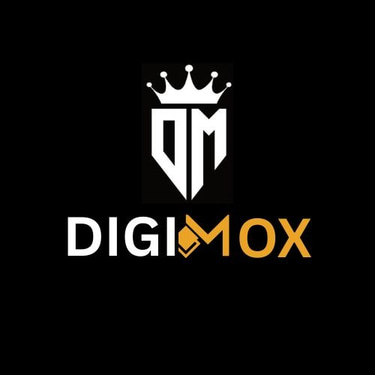What is Digital Marketing and How It Works
Digital marketing is the component of marketing that uses the Internet and online-based digital technologies such as desktop computers, mobile phones, and other digital media and platforms to promote products and services. It has significantly transformed the way brands and businesses utilize technology for marketing since the 1990s and 2000s. As digital platforms became increasingly incorporated into marketing plans and everyday life, and as people increasingly used digital devices instead of visiting physical shops, digital marketing campaigns have become prevalent, employing combinations of methods. Some of these methods include: search engine optimization (SEO), search engine marketing (SEM), content marketing, influencer marketing, content automation, campaign marketing, data-driven marketing, e-commerce marketing, social media marketing, social media optimization, email direct marketing, display advertising, e-books, and digital products like games. Digital marketing also extends to non-Internet channels such as television, mobile phones (SMS and MMS), callbacks, and on-hold mobile ringtones. This extension differentiates digital marketing from online marketing.
8/11/20252 min read
Definition
Digital marketing is promoting products or services using digital devices and technology. In simple terms, it's any form of marketing that happens online, utilizing tools like smartphones, laptops, the internet, and social media platforms.
Key Channels
Key Channels of Digital Marketing Digital marketing encompasses various channels, including SEO, content marketing, social media (Instagram, Facebook, etc.), email marketing, PPC ads, affiliate marketing, influencer marketing, online PR, video marketing, display ads, mobile marketing, and voice search optimization. All these channels work together to engage and reach audiences effectively.
Example of Digital Marketing
A company might run targeted Facebook ads, optimize its website for search engines (SEO), or engage customers through email campaigns to increase brand awareness and drive sales. The goal is to promote products, build a strong online presence, enhance customer engagement, and boost conversions through tailored strategies.
Understanding the Mechanics of Digital Marketing
Marketing includes various techniques and media to promote products and increase market share. It requires a combination of advertising and sales strategy. While companies once focused on marketing through print, television, and radio, the internet gave them a new way to reach consumers. Email became popular early in the digital era, followed by search engines and social media platforms, which allowed for user tracking and targeted messaging.
Smartphones and portable devices now enable companies to market products to consumers anywhere. Digital marketing can be interactive, unlike traditional print or television advertising.
Digital Marketing Channels
Website Marketing
Search Engine Optimization (SEO)
Pay-Per-Click Advertising (PPC)
Content Marketing
Email Marketing
Social Media Marketing (SMM)
Affiliate Marketing
Video Marketing
Text Messaging (SMS & MMS)
Influencer Marketing
Voice Search Optimization
Marketing Automation
E-commerce Marketing
Community Management
The Benefits of Digital Marketing
Cost-Effective: Digital marketing levels the playing field for small and medium businesses to compete with larger brands.
Easy to Measure: You can track user behavior and campaign success in real time.
High Engagement: Brands can interact with customers throughout their journey.
Personalization: Businesses can segment customers and tailor experiences.
Flexibility: You can make real-time updates and optimizations.
What is a Digital Marketing Strategy? A digital marketing strategy is a plan that outlines how a business will use digital channels to achieve marketing goals. It includes choosing the right channels, creating content, targeting the right audience, setting KPIs, and continuously optimizing for better performance.
Challenges in Digital Marketing
Rapid Evolution of Digital Channels
Data Management and Analysis
Consumer Attention Span
Algorithm Dependence
Budget Allocation
Maintaining Engagement
Inbound Marketing vs Digital Marketing Digital marketing is the broader umbrella, whereas inbound marketing focuses on attracting customers via content and engagement, rather than pushing ads. Inbound is a strategy within digital marketing.
B2B vs B2C Digital Marketing B2B digital marketing focuses on logic-driven buying decisions and often uses platforms like LinkedIn. B2C marketing is emotion-driven, uses quicker buying cycles, and leans heavily on channels like Instagram and Facebook.
Key Performance Indicators (KPIs) in Digital Marketing
Click-through Rate (CTR)
Conversion Rate
Bounce Rate
Customer Acquisition Cost (CAC)
Customer Lifetime Value (CLV)
Return on Ad Spend (ROAS)
Social Media Engagement
Website Traffic
Skills Required for Digital Marketers
Communication
Data Analytics
Social Media Expertise
SEO and SEM Knowledge
Creativity and Copywriting
Basic Design and Video Editing
Digital marketing continues to evolve and adapt, but its core objective remains the same: connecting businesses with consumers through digital means. As technology grows, so do the opportunities and challenges in this dynamic field.
Connect
Get in touch for your digital marketing needs.
Support
Follow
+91-8397982724
© 2025. All rights reserved.
